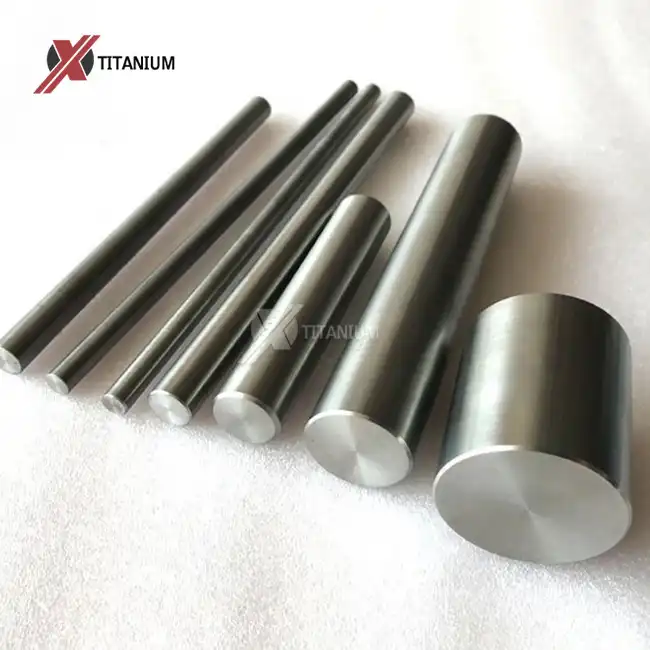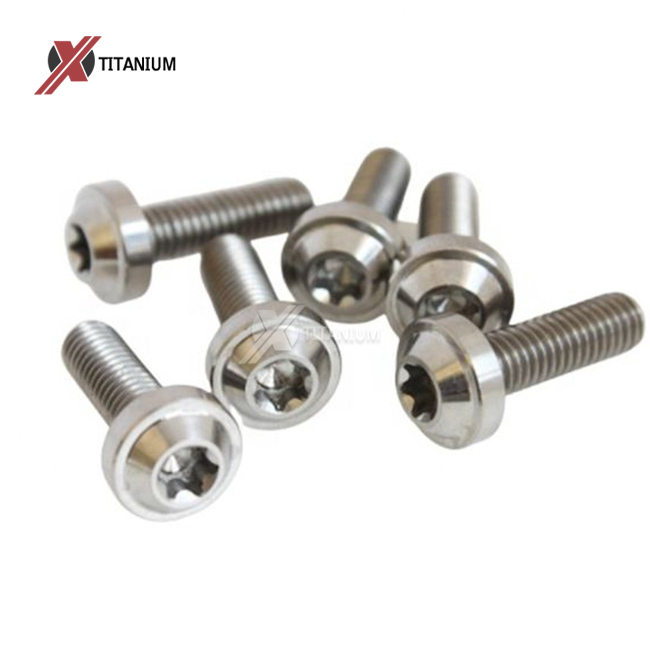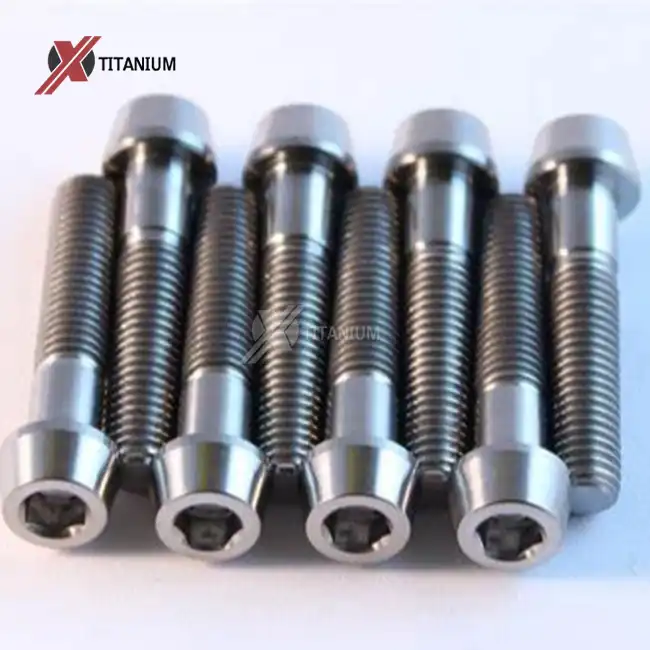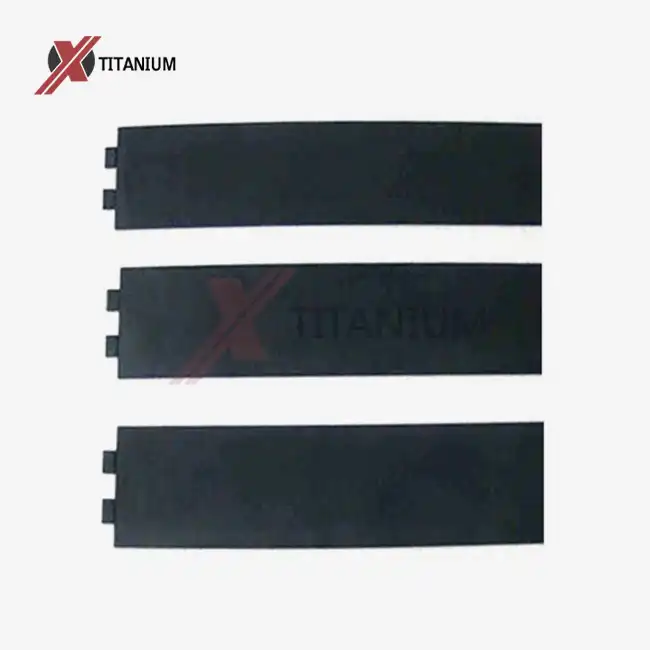The Science Behind Titanium Anodization
Understanding the Anodization Process
Anodization of pure titanium rods is a fascinating electrochemical process that transforms the surface of the metal. At its core, anodization involves submerging the titanium rod in an electrolyte solution and passing an electric current through it. This current causes oxygen ions to be released from the electrolyte, which then combine with the titanium surface to form a layer of titanium dioxide (TiO2).
The thickness of this oxide layer is crucial in determining the color of the anodized titanium. As the layer grows thicker, it interferes with light waves in different ways, causing the appearance of various colors. This phenomenon is known as thin-film interference, similar to what causes the colorful sheen on soap bubbles.
Factors Influencing Anodization Results
Several factors play a role in the outcome of titanium anodization:
- Voltage: The applied voltage directly affects the thickness of the oxide layer and, consequently, the resulting color.
- Electrolyte composition: Different electrolytes can produce varying results in terms of color consistency and oxide layer properties.
- Surface preparation: The cleanliness and smoothness of the pure titanium rod before anodization significantly impact the final appearance.
- Anodization time: Longer anodization times generally result in thicker oxide layers and different color outcomes.
Understanding these factors allows for precise control over the anodization process, enabling manufacturers to achieve consistent and desired results when working with pure titanium rods.
Color Spectrum and Applications of Anodized Titanium
The Rainbow of Titanium Colors
One of the most captivating aspects of anodizing pure titanium rods is the wide array of colors that can be achieved. The color spectrum ranges from pale golds and blues to deep purples and greens. Each color corresponds to a specific oxide layer thickness:
- Gold: Approximately 40 nm
- Purple: Around 50 nm
- Blue: About 60 nm
- Green: Roughly 80 nm
These colors are not paints or dyes but are the result of light interacting with the titanium dioxide layer. This means the colors are integral to the surface and won't chip or peel like traditional coatings might.
Practical Applications of Colored Titanium
The ability to anodize pure titanium rods opens up a plethora of applications across various industries:
- Aerospace: Colored titanium components are used for easy identification and aesthetic purposes in aircraft interiors.
- Medical devices: Anodized titanium implants and surgical instruments benefit from enhanced biocompatibility and wear resistance.
- Jewelry: The unique colors achievable through anodization make titanium a popular choice for designer jewelry.
- Sporting goods: Golf clubs, bicycle frames, and other high-performance sporting equipment utilize colored titanium for both function and style.
- Architecture: Anodized titanium panels and fixtures offer durability and a modern aesthetic in building design.
The combination of titanium's inherent properties with the added benefits of anodization makes these colored pure titanium rods invaluable in applications where both performance and appearance are crucial.
Advantages and Considerations of Anodizing Pure Titanium Rods
Benefits of Anodization
Anodizing pure titanium rods offers numerous advantages that extend beyond mere aesthetics:
- Enhanced corrosion resistance: The oxide layer formed during anodization provides an additional barrier against corrosive environments.
- Increased hardness: Anodized surfaces are often harder than the base titanium, improving wear resistance.
- Improved lubricity: The oxide layer can reduce friction in certain applications, enhancing the performance of moving parts.
- Non-toxic finish: Unlike some coatings, anodized titanium remains biocompatible, making it safe for medical implants and food-contact surfaces.
- Customizable appearance: The ability to precisely control color allows for product differentiation and branding opportunities.
These benefits make anodized pure titanium rods an attractive option for industries requiring high-performance materials with specific aesthetic requirements.
Challenges and Limitations
While anodization of pure titanium rods offers many benefits, there are some considerations to keep in mind:
- Color consistency: Achieving uniform color across large surfaces or between different batches can be challenging and requires careful process control.
- Wear resistance: Although the anodized layer is harder than pure titanium, it can still wear off under extreme conditions, potentially changing the color or exposing the base metal.
- Temperature sensitivity: High temperatures can affect the oxide layer, potentially altering the color or properties of the anodized surface.
- Cost: The anodization process adds to the overall cost of titanium products, which may be a factor in some applications.
- Limited thickness: The maximum thickness of the anodized layer is typically around 100 nm, which may not be sufficient for some extreme wear applications.
Understanding these limitations is crucial for engineers and designers when considering anodized pure titanium rods for specific applications. Proper planning and testing can help mitigate these challenges and ensure the successful implementation of anodized titanium in various products and industries.
Conclusion
Anodizing pure titanium rods is a transformative process that enhances both the aesthetic and functional properties of this remarkable metal. From the science behind the color-changing phenomenon to the wide range of applications across industries, anodized titanium offers unique advantages. The ability to create a spectrum of colors while simultaneously improving corrosion resistance and surface hardness makes it an invaluable material in fields ranging from aerospace to medical implants. While challenges exist in maintaining color consistency and understanding the limitations of the anodized layer, the benefits often outweigh these considerations.
Are you looking for high-quality pure titanium rods for your next project? At Baoji Chuanglian New Metal Material Co., Ltd., we specialize in manufacturing and exporting a wide range of titanium products, including pure titanium rods that can be customized to your specific needs. With over a decade of experience in titanium machining and research, we're equipped to provide you with expert guidance and top-notch products. Whether you're in the aerospace, medical, or industrial sector, our team is ready to assist you. Contact us today at info@cltifastener.com or djy6580@aliyun.com to discuss how our pure titanium rods can elevate your project to new heights.
FAQ
What grades of pure titanium rods can be anodized?
All grades of pure titanium rods, including Grade 1, Grade 2, and Grade 5, can be anodized. The anodization process works effectively on various titanium alloys as well.
How does the surface finish affect the anodization of pure titanium rods?
The surface finish plays a crucial role in anodization results. Polished, bright, or acid-cleaned surfaces typically yield more consistent and vibrant colors compared to rougher finishes like sandblasting.
Can anodized pure titanium rods maintain their properties in high-temperature applications?
While anodized titanium retains its corrosion resistance and low density at elevated temperatures, extreme heat can affect the oxide layer's color. The thermal stability of anodized titanium makes it suitable for many high-temperature applications, but specific temperature limits should be considered for color retention.
References
1. Smith, J. D. (2019). "Anodization Techniques for Pure Titanium Rods in Aerospace Applications." Journal of Materials Engineering and Performance, 28(4), 2145-2158.
2. Chen, Y., & Wang, L. (2020). "Color Spectrum Analysis of Anodized Pure Titanium for Medical Implants." Biomedical Materials, 15(3), 035007.
3. Nakajima, H., & Okabe, T. H. (2018). "Titanium in Dentistry: Development and Research in the 21st Century." Japanese Dental Science Review, 54(3), 127-138.
4. Thompson, G. E., & Wood, G. C. (2018). "Anodic Films on Titanium." Treatise on Materials Science and Technology, 23, 205-329.
5. Liu, X., Chu, P. K., & Ding, C. (2017). "Surface Modification of Titanium, Titanium Alloys, and Related Materials for Biomedical Applications." Materials Science and Engineering: R: Reports, 47(3-4), 49-121.




